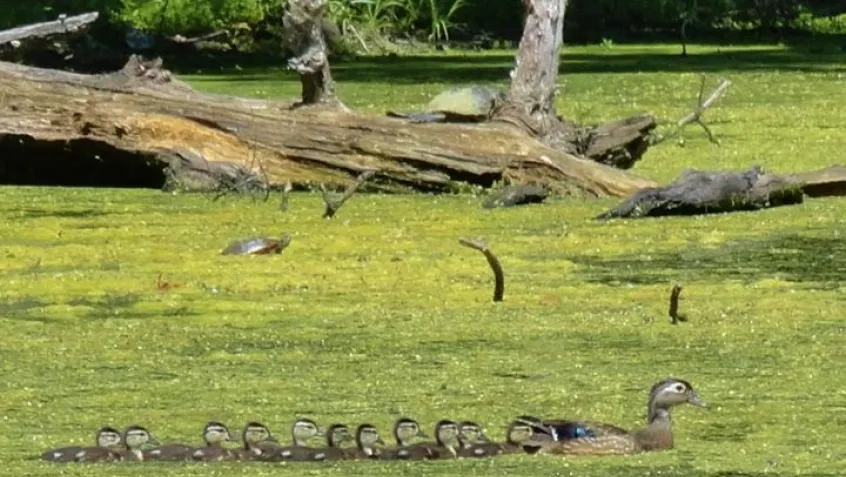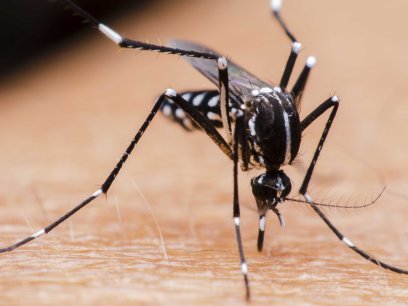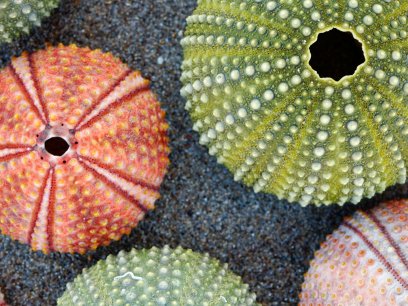
As temperatures drop and autumn arrives, you may notice that some algal blooms aren’t fading away with summer.
During warmer months, the water in still bodies such as lakes or ponds becomes separated based on temperature. Sunlight hits the surface of the water, warming it. From there, the light is able to penetrate the surface and continue warming up to a certain depth, depending on the clarity and stillness of the water. Below that depth of sunlight penetration, water remains dark and chilly. Since warmer water is less dense than cooler water, the sun-soaked water floats above the cooler water below, reducing the amount of mixing that can occur in the lake or pond. Nutrients that sink to the bottom of the water body are mostly stuck in the heavier layer, unable to rise. As summer continues, the surface water becomes depleted of nutrients, impeding the growth of algae, plants, and animals that depend on these nutrients for food.
Once fall sets in, the surface water cools, becomes denser, and sinks to the bottom, finally allowing for mixing in the water column. The water that was previously at the bottom is buoyed up, bringing with it the supply of nutrients that accumulated on the lake floor through the summer. This large supply of phosphorous, nitrogen, and organic matter can stimulate a late bloom of algae at the surface, creating a green, brown, or red lake well into autumn.
Don't touch the algae!
If you see an algae bloom, don’t touch it! While there are lots species of algae that form blooms, many of which are not toxic, don’t take the chance. If you see a lake or pond that has a floating algae mat, scum layer, or discoloration, don’t allow children or pets to play in or drink the water. Contact your local health or natural resources department to report any particularly large blooms and always obey posted signs for beach closings and health warnings.
Sources:
- Illinois Environmental Protection Agency. n.d. “Lake Stratification and Mixing.” Springfield: Illinois EPA. http://www.epa.state.il.us/water/conservation/lake-notes/lake-stratific….
- US EPA. 2015. "Harmful Algal Blooms." Accessed October 16. http://www2.epa.gov/nutrientpollution/harmful-algal-blooms


